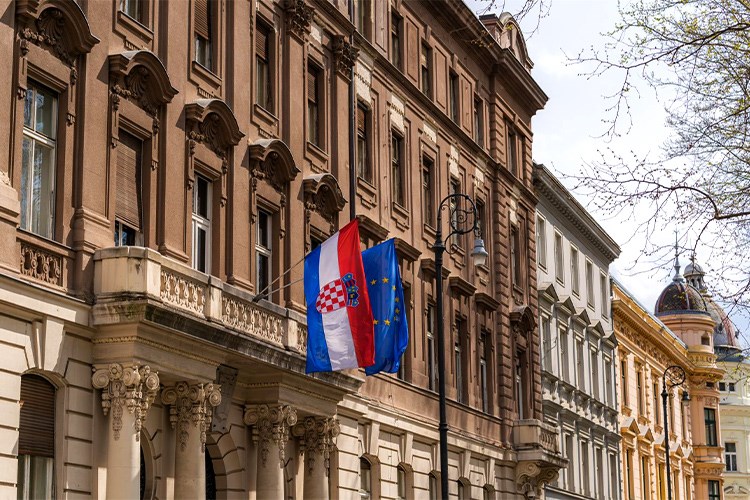Current situation
A century large rainfall in Eastern Croatia in May 2014 has caused large-scale flooding with subsequent collapse of transit routes and evacuation of 17,631 people, which are currently located in six collective centres in the adjacent region and approximately 1800 people which are still located in private homes. Further 36,000 people in Croatia were endangered by the floods. Over 17,000 school children were unable to attend school. There have been 2 casualties. Croatia has additionally taken in 244 families (583 persons) from the flooded area in Bosnia and Hercegovina.
A total number of 4,367 housing units have been flooded. According to the initial assessment of the damage made, 650 of the housing units will need to be reconstructed, of which 250 completely rebuilt (estimated cost of reconstruction is around 20,000 USD, while the estimated rebuilding cost is around 80,000 USD). Around 50% of all crops have been destroyed, and around 21,000 cattle have been evacuated from the flooded area while over 10100 animal carcasses (around 240 tons that need to be disposed) have been collected so far. The most effected cities and municipalities are: Slavonski Brod, Municipality of Oriovac, Municipality of Slavonski šamac, Municipality of Oprisavci, Municipality of Okucani and the wider area of Županja.
Response
In order to address the needs of the affected people and areas in the short-, medium- and long term, on 23 May 2014 the Government of Croatia has sent an appeal for international humanitarian assistance.
As the water is withdrawing, the area is being cleaned, sanitised and decontaminated. Water is being pumped out of the houses so as to prepare them for drying. At the same time, the experts from the Ministry of Construction and Physical Planning are assessing the damage on the housing units and making a list of houses that will need to be levelled and later rebuilt. A fraction of the Sava river levee, which was breached on 17 May, further aggravating the severe flood damage, is being reconstructed.
All efforts are directed towards getting the displaced people safely back to their homes or at least close to their homes so that they can actively take part in the reconstruction and continue with the everyday work as soon as possible. For this purpose, the locations for setting up containers for temporary accommodation of affected people are being set up. The cost of one such container is around 8,000 USD.
In the meantime, in order to be habitable, the intact houses need to be dried, which in some cases takes weeks. Therefore, the next step is to get sufficient dehumidifiers at the approximate cost of 700 USD/piece.
Furthermore, we are facing the rising threat of mosquitos and the diseases they could potentially transmit in the flooded areas in all three neighbouring countries (BiH, Serbia, Croatia). This threat would best be resolved regionally. The approximate cost for the anti-mosquito treatment (aerial spraying) of the Croatian area is 1.4 million USD. The total cost for the three countries is around 8.3 million USD.
Even though water levels have begun to recede there is a new threat since the area is contaminated with landmines and other non-exploded remnants of war. Namely, three known minefields of around 1.4 km2 surface are contaminated with anti-personnel and anti-vehicle mines. Due to the flooding those landmines may have been dislocated outside the previously marked locations, which make the subsequent assessment of the damage, clearing and the reconstruction of the flooded areas even more delicate. The cleaning of landmines is estimated at the cost of 5.5 million USD.
PRIORITY NEEDS
Bearing in mind a constant change of circumstances affecting the needs-assessment, the possibility of more effective utilisation of capacities otherwise needed for coordination, transport, storage and dissemination of in-kind assistance, and the potential mobilisation of our own resources (e.g. in the field of demining), in order to adequately, effectively and sustainably respond to the catastrophe, financial assistance would be the preferred alternative of support, without prejudice to other kinds of assistance offered.
Further to the financial assistance, the four items on the priority list are:
Containers for the displaced families - in order for the displaced victims of this disaster to actively take part in the reconstruction of their homes, continue work on their land and taking care of the livestock we would urge that 1.000 items be bought locally. In this way, you would directly support the families struck by the disaster and ensure aid effectiveness and donor visibility.
Donation of 3 tons of Permetrin and 3 tons of Diflubenzuron for aerial spraying of mosquitoes over flooded areas in Croatia. If funds are available, there is a possibility of a regional project for spraying of the whole flooded region in Croatia, Bosnia and Herzegovina and Serbia – in that case 33 tons of each of the agents is needed.
Dehumidifiers (1.000 items) – for drying walls in the flooded houses.
Funds for activities related to demining – Total cost 5.5 million USD
Pressemitteilungen

